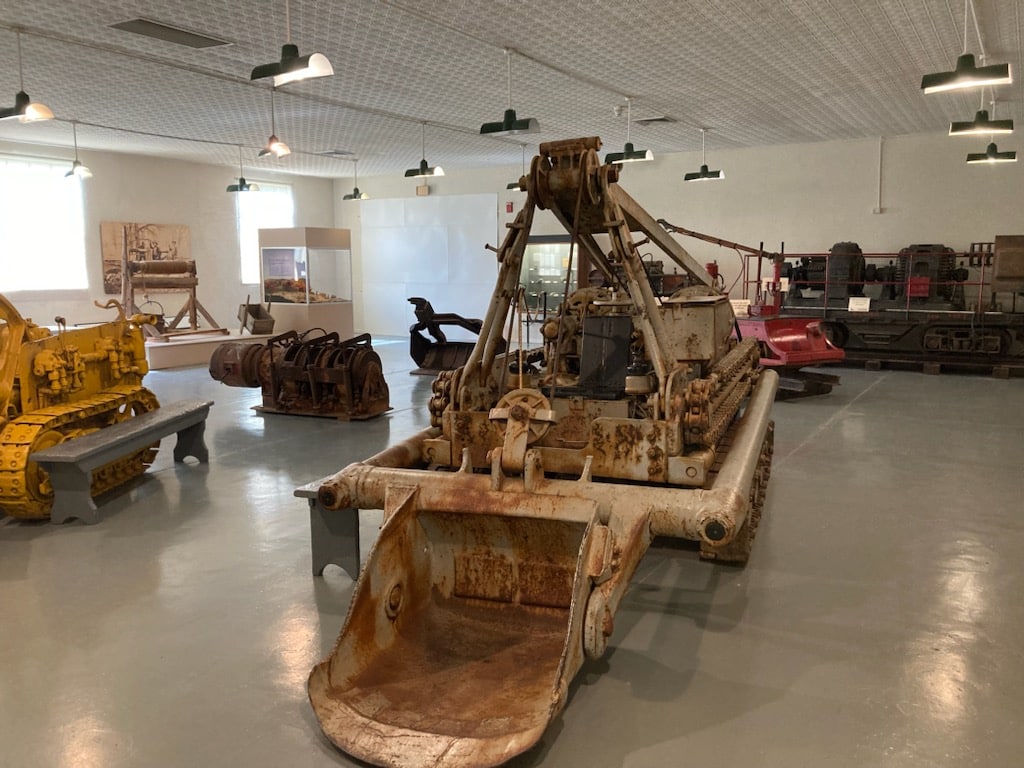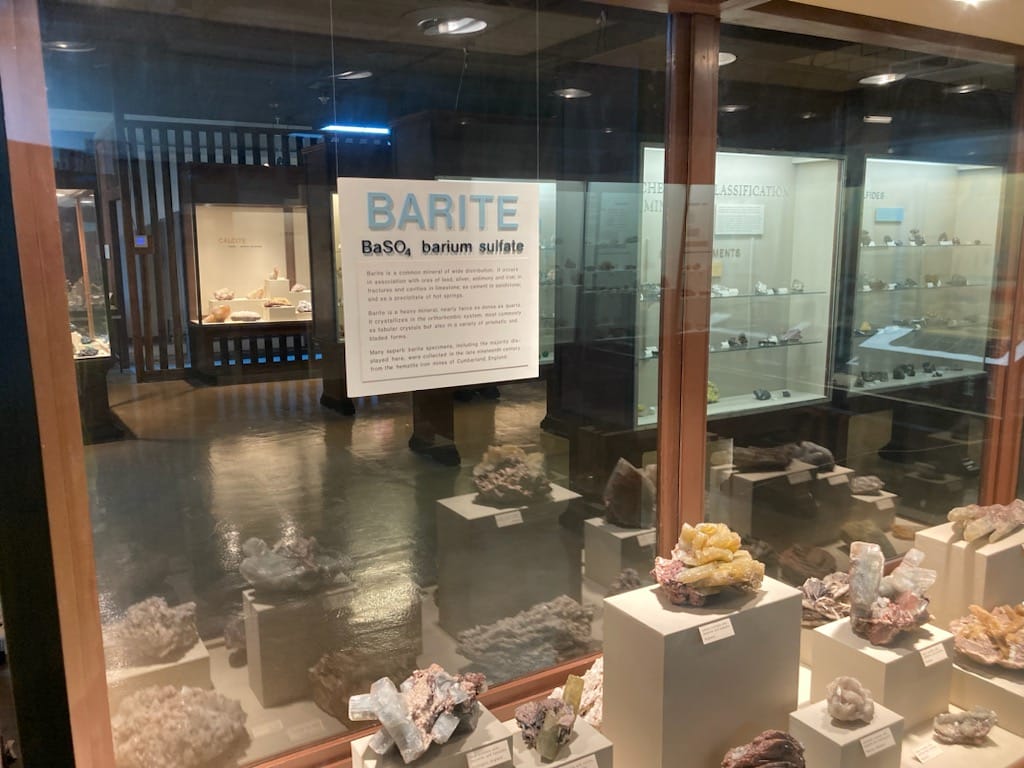Lead mining has been big business in the eastern Ozarks since about 1720. But how much do you know about the history of mining in Missouri? You can learn all about it at a free and informative open house at a historic state mine museum!

Come explore the history of mining in the Show-Me state – and see the processing plant of the former St. Joe Lead Co. – in the heart of the Old Lead Belt at Missouri Mines State Historic Site in Park Hills. Join staff for a free Old Mine Open House on Saturday, Sept. 30, 2023, from 9 AM until 5 PM.
The mine’s former powerhouse has been turned into a museum that traces the area’s mining history, displays actual machinery from the mines, and houses one of the Midwest’s finest mineral collections.

Its mineral collection gallery includes exhibits on Missouri geology and mineral resources. It boasts 27 large cases of mineral specimens, designed not only to showcase the many spectacular crystals, but also to educate. About 1,100 specimens from worldwide localities are on display.
This open house event honors mine workers of Missouri’s Old Lead Belt region. Retired miners and other lead company workers are invited to attend the event, meet with others, and talk with attendees about their experiences.
There will also be fun, interactive activities for kids at the open house including a mineral ID sand table and a mine car shovel contest. Plus, storyteller Eric Haynes will present a special story program at 11 AM.
The museum will be open for guided tours on the hour from 9 AM until 4 PM, and visitors also have the option to explore the exhibits on their own. The normal admission fees for the museum are being waived for the open house.
So make up your “mine” to come enjoy a fascinating freeday of learning!
For more information, call the historic site at 573-431-6226.
Speaking of mines and mining, do you know the name of Missouri’s first settlement founded away from a river? It was a mining town. To find out click here.
More about lead:
Lead has been mined for more than 6,000 years, and the metal and its compounds have been used throughout history. Small lead nuggets have been found in pre-Columbian Peru, Yucatan, and Guatemala.
This easily worked and corrosion-resistant metal has been used for pipes, pewter, and paint since Roman times. It has also been used in lead glazes for pottery and, in this century, insecticides, hair dyes and cosmetics, and as an anti-knocking additive for gasoline. All these uses have now been banned, replaced or discouraged, due to lead’s health hazards.
Lead is still widely used for car batteries, pigments, ammunition, cable sheathing, weights for lifting, weight belts for diving, lead crystal glass, radiation protection, and in some solders. It is also often used to store corrosive liquids, and sometimes in architecture, for roofing and in stained glass windows.
Lead has no known biological role, and can accumulate in the body and cause serious health problems. It’s toxic, teratogenic (disturbs embryo or fetus development), and carcinogenic.
Our daily intake of lead from all sources is about 0.1 milligrams. The average human body stores about 120 milligrams of lead in our bones.
While it is not possible to prevent or remove lead entirely from foods, the levels can be reduced.
Federal and state regulatory standards have helped — and continue to help — reduce the amount of lead in air, drinking water, soil, consumer products, food, and occupational settings.
For hundreds more events, visit Missouri Life’s Event Calendar.
Related Posts
The first free kindergarten in the country opens
On August 26, 1873, the first free kindergarten in the country opens in Carondelet. Susan Blow taught the children in the morning at the Des Peres School, while educating the teachers in the afternoon.
Juneteenth features free admission at Missouri Botanical Garden
The Missouri Botanical Garden will offer free admission to all visitors on Sunday, June 19 in honor of Juneteenth. Visitors can spend a restful and restorative day in the Garden and partake in special activities planned for the day.
Clydesdales greet Missouri Life staff during tour
Following the Missouri Life magazine quarterly staff meeting at the publication's office in Rocheport on Friday, June 3, the group toured Warm Springs Reach, one of the homes of the Budweiser Clydesdales.



